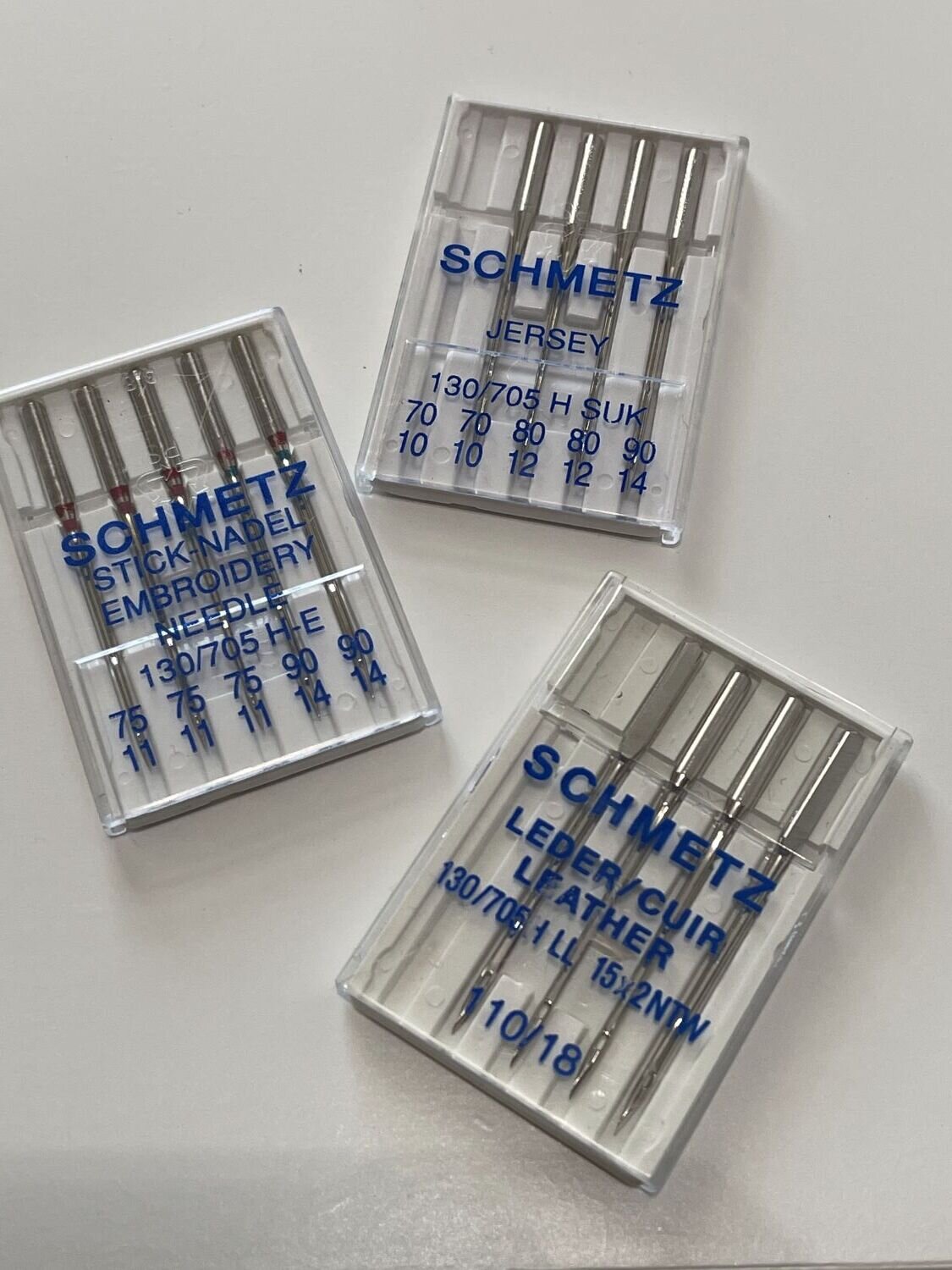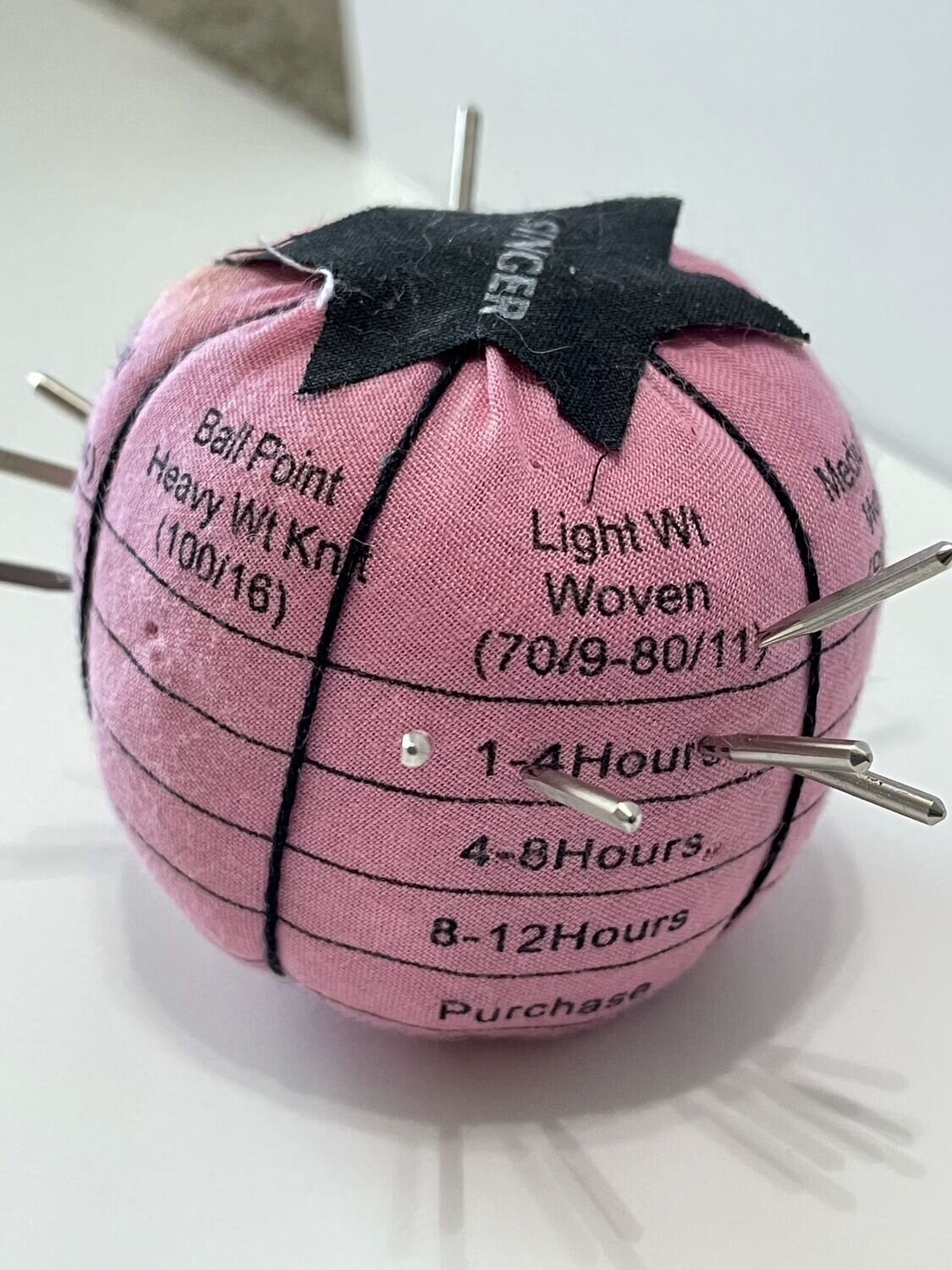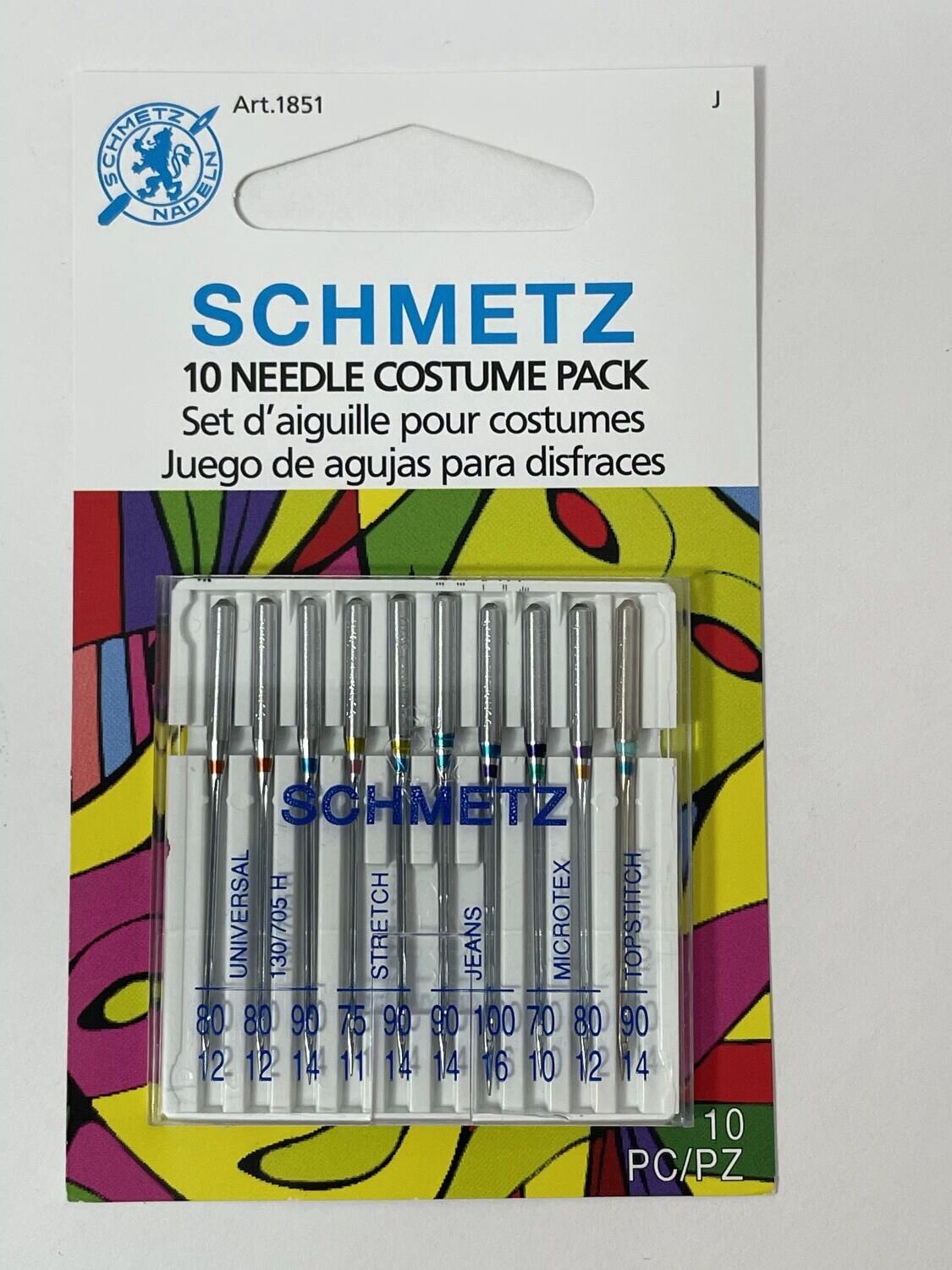What Size Needle? Learn to Use the Right Needle For Any Fabric You Sew
Needles are a crucial component in sewing, yet little time is spent learning about them. When I started sewing, I’d open my pack of needles, put one in my machine, and sew until it broke. (I broke needles weekly back then.) No one taught me about needle size, when to change them, or how long to use them. It’s only been in the last few years that I realized the importance of using the right needle to improve my sewing. Today I’m going to share everything I’ve learned with you!
NEEDLES COME IN A VARIETY OF SIZES
Using the right size will improve your sewing and reduce thread breakage. There are TWO standard needle size guides--European and American. Since Schmetz needles are made in Germany, the European size is listed on the top with the American size underneath. For example, 60/8 or 110/18. As a rule of thumb, the lower the number the thinner the needle shaft.
70/10 needles are made to sew fine, lightweight fabrics like chiffon, satin, and organza. Think fabrics for formal wear.
80/12 needles are appropriate to sew lightweight fabrics like lawn, faille, and georgette. Think lightweight flowy fabrics for dresses and blouses.
90/14 needles are great when you are starting to sew medium weight fabrics like poplin, broadcloth and muslin. Think printed quilting cotton.
These three sizes come standard in a pack of Schmetz universal needles, which is a great pack to get you started.
CHANGE YOUR NEEDLE WHEN YOU CHANGE YOUR FABRIC
Always change your needle to work WITH your fabric. Thinner needles make small holes in delicate fabrics. A thin needle ensures the needle goes into fine fabric without destroying the weave, thereby eliminating snags and puckers along the stitch line.
Thicker needles make large holes in heavy duty fabrics. The shaft thickness ensures the needle will penetrate all the layers, without breaking, to form a sturdy stitch line.
Schmetz makes specialty needles for specific fabrics, like stretch, metallic, vinyl, and more. The needle points of specialty needles are designed for the individual fabrics. For example, Jersey/Ball point needles, used for sewing knits, have rounded points to slip between the weave of the fabric. Leather needles have a cutting point to pierce leather, since it’s not a woven material. Specialty needles are designed to work with the fabric type to create even and sturdy seam lines. It’s totally worth the extra effort and expense to get the right needle for your sewing project.
NEEDLES DON’T STAY SHARP FOREVER
It’s good practice to keep track of how long you sew with a particular needle. While this totally makes sense, it wasn’t something I ever thought about. Truthfully, when I started sewing my needle was usually too thin and it broke often. Since I was changing it regularly my needle never had a chance to get dull. Once I started using the right sized needle, I realized after hours of sewing it didn’t work as well.
Knowing when to change your needle is something learned with time. Not only does it depend on how many hours you’ve been using with a particular needle, but also the type of fabric you’ve been sewing. Dull needles cause upper thread breaks, so be sure to change your needle regularly.
Over the years I’ve discovered that light and medium weight fabrics wear out a needle slower than thick, heavy weight fabrics. Generally I sew with a needle for 10-12 hours, unless I’m using heavy or thick fabrics, which reduces sew time to 6-8 hours.
MY FAVORITE SEWING MACHINE NEEDLES
In case you haven’t guessed, I only use Schmetz needles. The brand’s been making needles since 1851 and it’s recognized as the finest needle company in the world. Added bonus--you can buy them pretty much everywhere!
Schmetz needles are compatible with all major household machines, including Singer, Brother, Janome, Juki, Bernina, and many more!
And Schmetz makes needles for everything you could think to sew. Need a needle for knits? How about one for denim? Need to sew leather? Done, done, and DONE! Schmetz even has specialty needles for TOPSTITCHING and HEMSTITCHING! I just found the costume pack which has assorted sizes and types. All the needles I could possibly need in one handy pack, ready for the next time I sew costumes! Best of all Schmetz needles are readily available at Joann’s and Wal-Mart and online through Amazon or from Schmetz directly at schmetzneedles.com ($30 minimum order).
Schmetz recently started color coding their needles by use and size, which makes it easy to figure out which one to use. There is a handy chart on the Schmetz website click here to download and print for ready reference.
Now you know how needles can help you sew better. And you’ve got my endorsement of Schmetz needles, which are the way to go! Use the right needle for the job and you’ll be rewarded with smooth sewing!
Want more sewing tips and tricks from Sew Sew Lounge? Click here to join the interactive Facebook group, Let’s Talk Sewing for Beginners! hosted by Sew Sew Lounge. Weekly live events and plenty of helpful info to get you up and sewing in no time.
See you on the inside!




